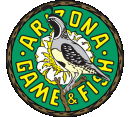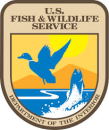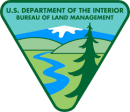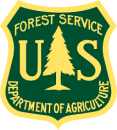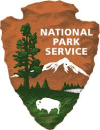Location













States
ArizonaEcosystem
WetlandIntroduction
The Sky Island region of Southeast Arizona hosts an exceptional abundance of springs, many of which are biodiversity hotspots, as well as keystone ecosystems that affect the surrounding landscape. Springs provide islands of habitat in arid regions and serve as refugia for species that depend on their water and mesic vegetation. In general, springs and their attributes are poorly documented despite their cultural, economic, and ecological significance. Beginning in 2012, Sky Island Alliance (SIA) and partner organizations began an inventory, assessment and management planning project to address critical gaps in information about these unique and important ecosystems.
Key Issues Addressed
To protect resources we must know where there are and what state they are in. Information about spring locations, ecology, hydrogeology, and management status is limited. This limits the ability of land managers to integrate spring stewardship into management activities and to focus protection and restoration efforts at the highest priority sites. A long history of ongoing human alterations, combined with increasing climate stressors, has led springs to be among the most threatened ecosystems, particularly in the arid Sky Islands. Springs may serve as climate refugia for plants and animals, and as sources of persistent water in a warming drying world. This project promotes informed management of springs by providing baseline information in an online format accessible across jurisdictions.
Project Goals
- Collect baseline ecological and management status information on springs
- Identify priority spring sites for restoration and/or protection
- Increase understanding of springs among land management agencies and the public
- Make information about springs available regionally and internationally
Project Highlights
- Springs Inventory Database: An online data portal is used to share springs monitoring data internationally.
- Promoting Climate Resilience: As the regional climate tends towards warmer and drier conditions, healthy springs will be essential in providing refugia for many species. The information gathered during these assessments will help local land managers make informed decisions about where to implement conservation or restore springs.
- Addressing limited agency resources: This project engaged a cadre of hundreds of volunteer citizen scientists, providing a model for using limited resources to accomplish broad-scope goals.
- Partnering across management boundaries: Spring inventory and assessment occurred across jurisdictional boundaries, and produced a wealth of new information that can be directly incorporated into land management planning throughout agencies and organizations.
- Building a long-term vision: By increasing regional understanding of these ecosystems, this project has helped integrate spring stewardship into long-term adaptive management planning programs such as prescribed fire.
Lessons Learned
Springs as Refugia: Springs provide islands of habitat in arid regions and serve as refugia for species that depend on their water and mesic vegetation.
- Engagement of land managers to understand their management questions, constraints and conservation and restoration options was key to development of the project. This effort has led to an increased focus on studying and managing springs by regional managers and consideration of springs in planning processes and restoration plans.
- Volunteers were an invaluable component of this project. Initial training is critical, but with this upfront investment, volunteers can greatly increase the number of areas monitored, keep costs low, and engage “citizen scientists” that become natural resource stewards.
- Volunteers with strong plant identification skills are needed. This need could be met by working more closely with the Arizona Native Plant Society and partner agencies to provide more plant ID expertise and training to volunteers.
Next Steps
- Expand “Adopt-a-Spring” program with citizen scientist volunteers to continue monitoring priority springs
- Update Springs Restoration Handbook to include climate-smart restoration components.
- Expand spring surveys to the Mexico portion of the Sky Island region and translate protocols into Spanish
Funding Partners
- Nina Mason Pulliam Charitable Trust
- The Kresge Foundation
- US Fish and Wildlife Service, Wildlife Without Borders
- Desert Landscape Conservation Cooperative
Resources
- Final Report: Springs in the Sky Island Region
- Springs Inventory and Monitoring Protocols
- Adaptation Action Plan for Spring Ecosystems
- Springs Online: Springs and Spring-Dependent Species Online Database
- Arizona Springs Restoration Handbook
- Desert Landscape Conservation Cooperative Webinar Recording
- U.S. Forest Service, Region 3
- Coronado National Forest
- National Park Service, Sonoran Desert Inventory & Monitoring Network
- National Park Service, Saguaro National Park
- Department of Defense, Ft Huachuca
- University of Arizona Water Resources Research Center
- Desert Landscape Conservation Cooperative
Contacts
- Louise Misztal, Executive Director, Sky Island Alliance, louise@skyislandalliance.org
- Carianne Campbell, Strategic Habitat Enhancements (Formerly Sky Island Alliance), carianne@strategichabitats.com
Case Study Lead Author
- Ashlee Simpson, CART Graduate Research Assistant, University of Arizona
Suggested Citation
Simpson, A. C. (2018). “Springs Inventory, Assessment, and Management Planning in the Sky Islands.” CART. Retrieved from https://www.fws.gov/project/management-planning-sky-islands.









